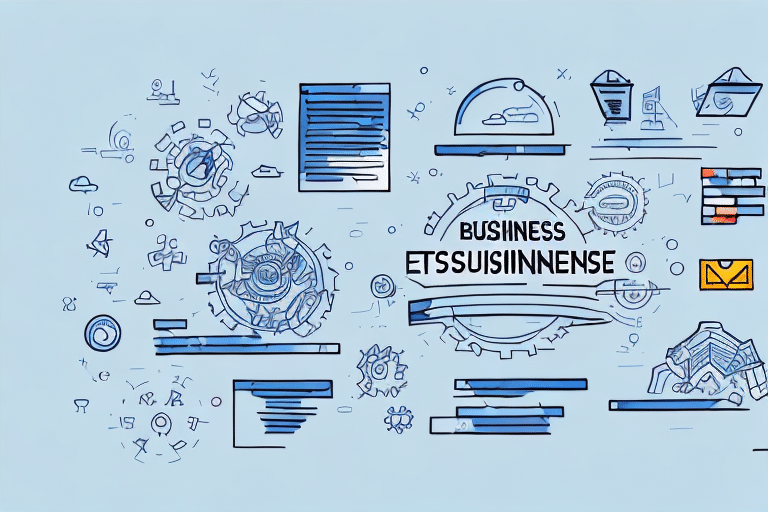7 Cost-Saving Projects to Help Your Business Thrive
As a business owner or manager, finding ways to enhance your company's profitability and ensure long-term success is paramount. Implementing cost-saving projects is an effective strategy to optimize operations and reduce expenses. This article explores seven impactful cost-saving initiatives that can help your business flourish.
1. Conduct a Comprehensive Cost Analysis
Identifying Potential Savings Areas
Begin by performing a thorough cost analysis of your business operations. Review financial statements, categorize expenses, and pinpoint areas where costs can be reduced without compromising quality. Tools like SWOT analysis can help identify strengths, weaknesses, opportunities, and threats, guiding you in prioritizing cost-saving measures.
Balancing Cost-Cutting and Strategic Investments
While reducing expenses is essential, it's equally important to identify opportunities for strategic investments that can drive revenue growth. For instance, investing in marketing or enhancing customer service can lead to increased sales and customer loyalty, ultimately boosting profits.
2. Implement Energy-Efficient Measures
Reducing Utility Bills
Energy-efficient upgrades can significantly lower utility expenses. Consider switching to LED lighting, installing programmable thermostats, or investing in solar panels. According to the U.S. Department of Energy, LED bulbs use up to 75% less energy than traditional incandescent bulbs and last 25 times longer.
Conducting Energy Audits
Performing an energy audit helps identify areas where energy is being wasted. Implementing the recommended changes can lead to substantial savings and a reduced carbon footprint, contributing to both financial and environmental sustainability.
3. Outsource Non-Core Business Functions
Lowering Overhead Costs
Outsourcing tasks such as bookkeeping, payroll, and customer service can reduce expenses related to salaries, benefits, and office space. By delegating these functions to specialized external providers, you can focus more on core business activities that drive revenue.
Choosing the Right Outsourcing Partners
Selecting reliable outsourcing partners is crucial. Ensure they have the necessary expertise and establish clear communication channels to maintain quality and efficiency. Resources like Forbes offer valuable insights on effective outsourcing strategies.
4. Adopt a Remote Work Policy
Reducing Office Expenses
Allowing employees to work remotely can lead to significant savings on office rent, utilities, and equipment. Additionally, flexible work arrangements can enhance employee satisfaction and retention.
Enhancing Productivity and Efficiency
Remote work can increase productivity by minimizing office distractions. Implementing robust communication tools and setting clear expectations ensures that remote teams remain effective and engaged.
5. Transition to Cloud-Based Software Solutions
Saving on IT Costs
Cloud-based solutions eliminate the need for expensive hardware and software investments. Services like Amazon Web Services and Microsoft Azure offer scalable and cost-effective alternatives that enhance data security and accessibility.
Scalability and Flexibility
Cloud services provide the flexibility to scale resources based on your business's evolving needs, ensuring that you only pay for what you use. This adaptability is especially beneficial for businesses with fluctuating demands.
6. Negotiate Better Deals with Suppliers
Reducing Procurement Costs
Negotiating favorable terms with suppliers can lead to significant cost reductions on raw materials, equipment, and services. Building strong relationships with suppliers ensures better pricing, reliable supply chains, and potential volume discounts.
Collaborative Negotiation Strategies
Approach negotiations with a focus on mutual benefits. Explore options like extended contracts, bulk purchasing, or co-investing in new technologies that can provide advantages for both parties.
7. Implement a Waste Reduction and Recycling Program
Saving on Disposal Costs
Establishing a waste reduction and recycling program can decrease disposal expenses and minimize your environmental impact. Conduct waste audits to identify recyclable materials and implement recycling stations within your business premises.
Enhancing Sustainability and Brand Image
Reducing waste contributes to environmental sustainability and enhances your brand's reputation. Consumers increasingly prefer businesses that prioritize eco-friendly practices, potentially attracting a larger customer base.
Conclusion: The Long-Term Benefits of Cost-Saving Projects
Implementing cost-saving projects is essential for achieving long-term business success. These initiatives not only reduce expenses and increase profitability but also enable reinvestment in growth opportunities and technological advancements. Additionally, many cost-saving measures contribute to environmental sustainability, enhancing your company's reputation and appeal to eco-conscious consumers.
By strategically adopting these cost-saving projects, your business can achieve financial stability, operational efficiency, and a competitive edge in the marketplace. Start planning and executing these initiatives today to secure a prosperous future for your business.




















